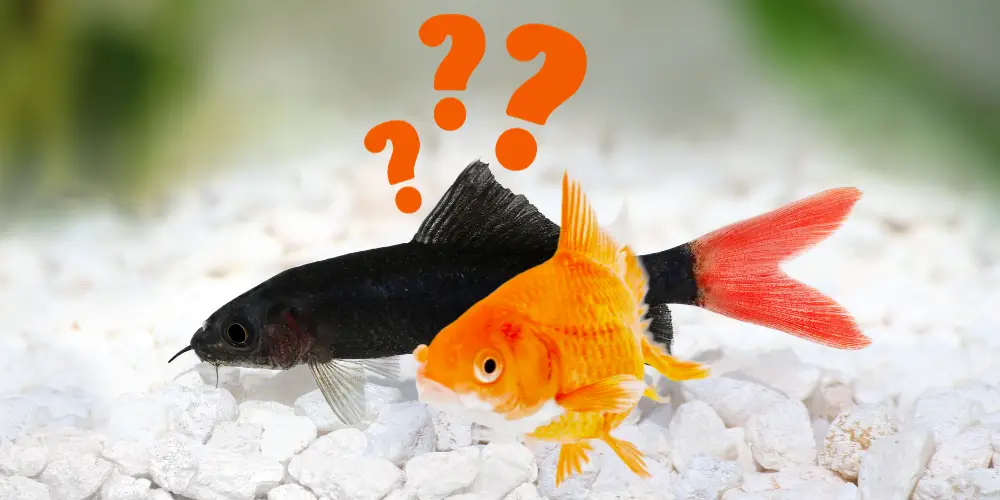When setting up an aquarium, one of the most intriguing yet challenging aspects is determining which fish species can live together harmoniously.
This decision goes beyond mere aesthetics; it’s about ensuring a peaceful and healthy environment for all inhabitants.
Among aquarium enthusiasts’ various compatibility queries, one particularly stands out: “Can red tail sharks and goldfish coexist peacefully in the same tank?”
Red tail sharks and goldfish generally cannot coexist peacefully in the same tank. The semi-aggressive nature of red tail sharks can stress the peaceful goldfish, leading to health issues and a disturbed tank environment.
Key Takeaways
- Red tail sharks, with their semi-aggressive nature and territorial behavior, are not ideal companions for the peaceful, slow-moving goldfish.
- Both species’ environmental and dietary needs differ significantly, posing challenges in a shared tank.
- Prioritizing the well-being of each species involves choosing compatible tank mates that align with their specific requirements.
Overview of Red Tail Sharks
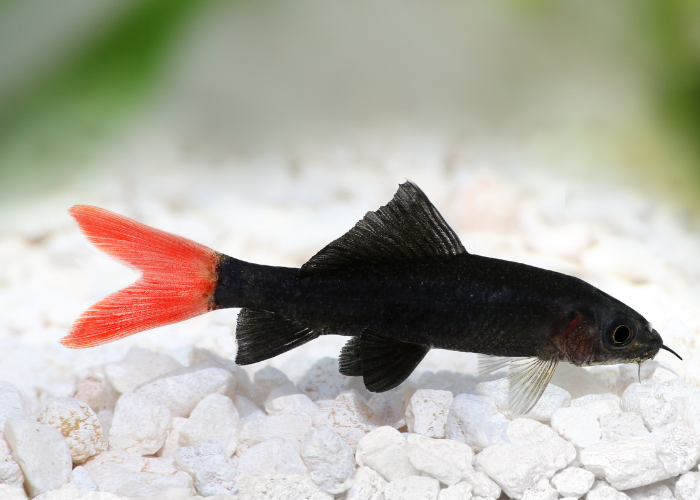
Red tail sharks, with their vibrant red tails contrasting against their dark bodies, are a captivating sight in any aquarium.
Originating from the freshwater streams of Thailand, these fish belong to the carp family but are far from the placid nature often associated with their relatives.
Behavior and Temperament
Red tail sharks are known for their semi-aggressive temperament. They are active swimmers and tend to establish territories within the aquarium.
This territorial behavior becomes more pronounced as they mature, often leading to aggression towards fish that invade their space.
Environmental Needs
Regarding their habitat, red tail sharks prefer aquariums that mimic their natural riverine environment.
This includes plenty of swimming space, hiding places like caves or dense vegetation, and a steady flow of clean, oxygen-rich water.
They thrive in a range of 22 to 26 degrees Celsius (72 to 79 degrees Fahrenheit) and require a well-maintained environment to stay healthy.
Diet and Health
Their diet in captivity should be diverse, including plant and animal matter. While they are not overly fussy eaters, a balanced diet is essential for maintaining vivid coloration and overall health.
Overview of Goldfish
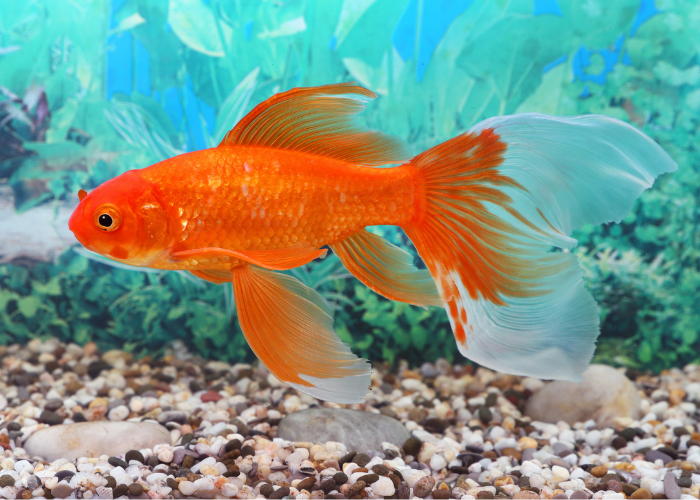
Goldfish are one of the most recognizable and beloved aquarium fish, cherished for their beautiful colors and graceful movements.
Originally domesticated in China over a thousand years ago, these fish have become a staple in aquariums worldwide.
Varieties and Appearance
There are numerous varieties of goldfish, ranging from common goldfish to fancy breeds like the Oranda and Ryukin, each with unique shapes and fin configurations. Their colors vary widely, including shades of orange, red, white, and even black.
Behavior and Social Needs
Despite their popularity, goldfish are often misunderstood. They are social creatures that enjoy the company of their kind and are known for their peaceful demeanor.
Goldfish do not exhibit aggressive behaviors typical of other species, making them ideal for a tranquil aquarium.
Environmental and Dietary Requirements
Goldfish require a spacious tank with ample filtration to accommodate their high bioload.
They are known for being prodigious waste producers, necessitating a robust filtration system to maintain water quality.
Temperature-wise, they are adaptable but prefer cooler water, typically between 20 to 23 degrees Celsius (68 to 74 degrees Fahrenheit).
In terms of diet, goldfish are omnivorous and do well on a diet that includes both plant and animal matter.
However, overfeeding is a common issue, so it’s crucial to adhere to a feeding schedule that meets their nutritional needs without compromising water quality.
Compatibility Analysis: Red Tail Sharks and Goldfish

When considering whether red tail sharks and goldfish can coexist in the same aquarium, several key factors must be examined.
While both species are visually appealing and popular among aquarists, their compatibility is limited due to distinct behavioral and environmental needs.
Behavioral Incompatibility
One of the primary concerns is the behavioral difference between these two species.
Red tail sharks, with their semi-aggressive nature and territorial tendencies, can become a source of stress for goldfish.
Goldfish, being generally peaceful and slower-moving, are ill-equipped to handle the assertive and sometimes bullying behavior of red tail sharks.
This disparity can lead to stress-related health issues for goldfish and a disturbed tank environment.
Environmental and Health Concerns
Another factor to consider is the environmental requirements of each fish.
Although both species can tolerate a range of similar temperatures, the high bioload produced by goldfish can lead to water quality issues that are detrimental to the health of red tail sharks.
Moreover, the goldfish’s slower swimming speed and lack of hiding places in a typical setup make them vulnerable to the more agile and territorial red tail shark.
Risk of Predation and Stress
Lastly, red tail sharks’ size and predatory instinct pose a risk to goldfish.
While they may not outright prey on goldfish, red tail sharks will likely chase and nip at them, especially in confined spaces.
This behavior can result in injury or stress for the goldfish, ultimately impacting their health and longevity.
Expert Recommendations and Alternatives
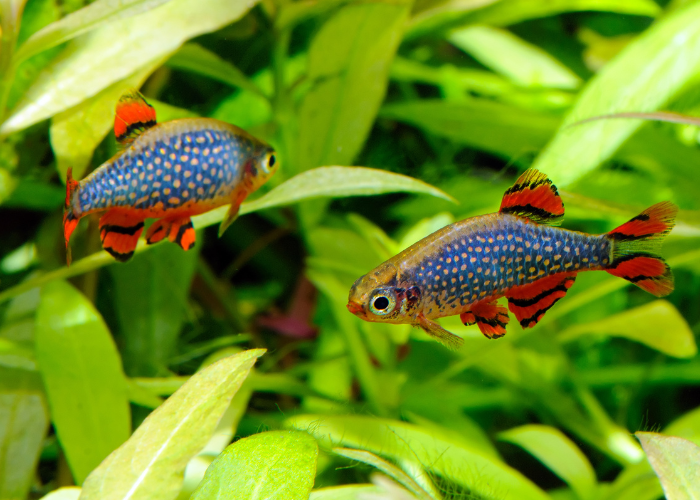
For aquarium enthusiasts fond of either red tail sharks or goldfish, finding suitable tank mates is crucial for a harmonious aquatic environment. Here are some recommendations and alternatives to consider:
Suitable Tank Mates for Red Tail Sharks
- Barbs and Danios: These species, especially tiger barbs, are active and can hold their own against the territorial nature of redtail sharks.
- Loaches and Larger Tetras: These fish are also good companions, as they are quick enough to avoid aggressive behavior and coexist peacefully.
- Avoid Small, Slow-Moving, or Long-Finned Fish: These fish are more likely to be harassed by red tail sharks.
RELATED POST: Do Rainbow Sharks Get Along with Bettas?
Ideal Companions for Goldfish
- Other Goldfish Varieties: Keeping goldfish with other goldfish, preferably of similar size and swimming ability, is often the best choice.
- White Cloud Mountain Minnows: These are a good option for cooler water tanks that goldfish prefer.
- Avoid Mixing with Tropical Fish: Goldfish thrive in cooler temperatures unsuitable for many tropical species.
General Tips for a Harmonious Aquarium
- Adequate Space: Ensure the tank is large enough to provide ample space for all inhabitants.
- Proper Filtration: Especially important in tanks with goldfish due to their high bioload.
- Regular Water Changes: Essential for maintaining water quality and reducing stress on fish.
- Observation: Regularly observe fish behavior to identify signs of stress or aggression.
Conclusion
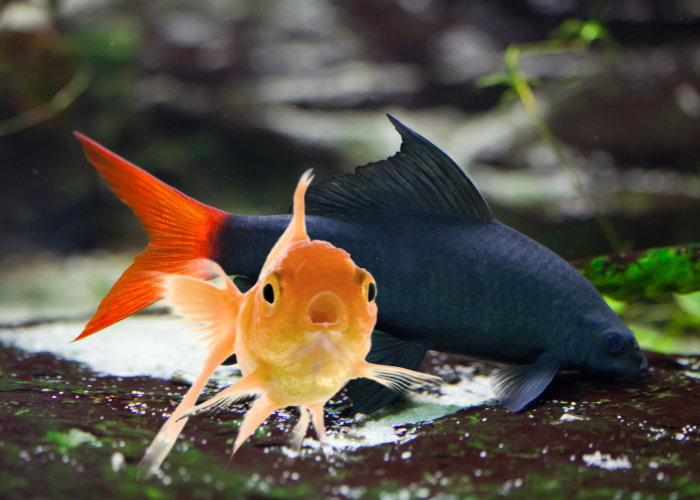
In summary, while red tail sharks and goldfish each add unique beauty and character to an aquarium, their cohabitation is fraught with challenges.
The significant behavioral differences, environmental needs, and potential for stress and harm make maintaining a peaceful coexistence between these two species difficult.
FAQs
Are red tail sharks more aggressive than rainbow sharks?
Red tail sharks tend to be more aggressive than rainbow sharks, particularly regarding territorial behavior.
They are known to establish and defend their territory more actively, which can lead to more aggressive interactions with other fish in the aquarium.
Which fish can live with goldfish?
Goldfish can live with other peaceful and similarly sized fish. Ideal tank mates include other goldfish varieties, White Cloud Mountain Minnows, and possibly some types of snails or shrimps. It’s important to avoid aggressive or fin-nipping fish.
Do red tail sharks eat small fish?
Red tail sharks may prey on smaller fish, especially in confined aquariums.
Their semi-aggressive nature and territorial behavior can make them a threat to smaller, slower-moving fish, leading to predation in some cases.
REFERENCES:
- Smart Aquarium Guide. (n.d.). Keep Red Tail Shark with Cichlids. Retrieved from https://smartaquariumguide.com/keep-red-tail-shark-with-cichlids/
- Aquaria Central. (2008, April 21). Red Tailed Shark with Goldfish. Retrieved from https://www.aquariacentral.com/forums/threads/red-tailed-shark-with-goldfish.123456/

